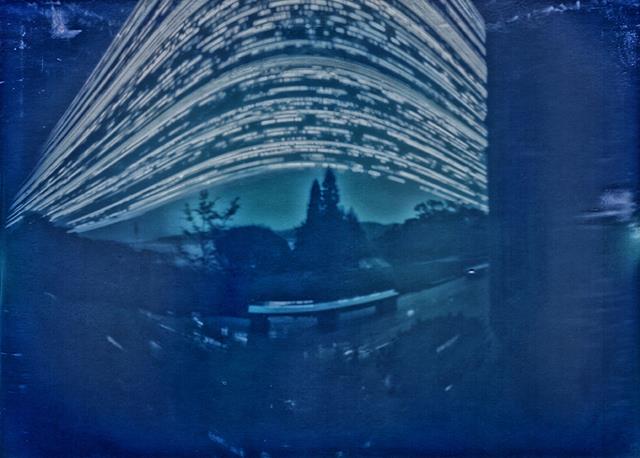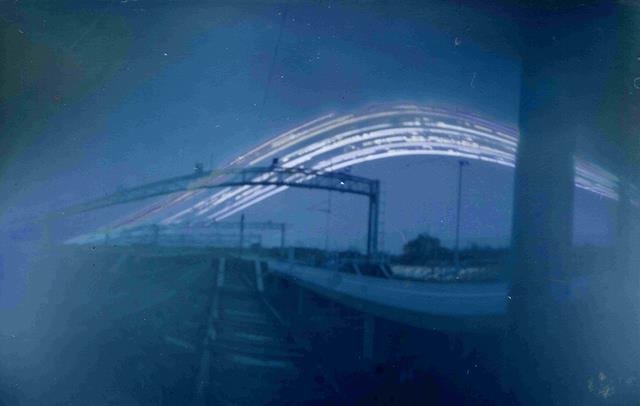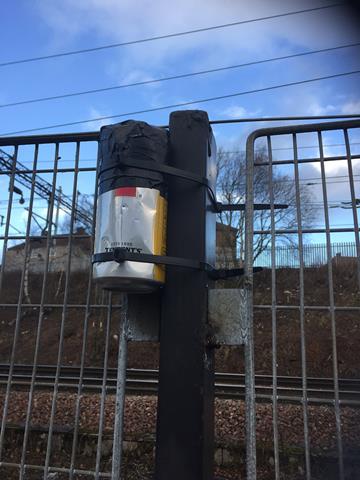All images by Mark McGillivray. Used with permission.
Lots of folks out there have never experimented with creating their own camera, but Mark McGillivray is the exception. He’s created his own beer can and film canister film cameras that he has used to photograph places over long periods of time. Usually these are called Solargraphs. They’re typically done with pinhole cameras and photograph an area for a very long amount of time. The images are typically really fun! So we talked to Mark about how he does some of his.
Phoblographer: Talk to us about how you got into photography.
Mark: I was brought up on the shores of Loch Lomond and now live just to the northeast of Glasgow with my wife and two sons. I presently work full time as a Train Driver (or I would be a Railroad Engineer in the USA).
One of my Primary school (Elementary School) teachers was married to a local Author, Mountaineer and TV Presenter called Tom Weir, who used to visit the school frequently and accompanied us on several school trips. He often showed us photos of his travels and I think that’s where my love of photography started – I just wanted to make pictures like his! To this day, I find the landscape and moods of Scotland to be endlessly fascinating. I’m still inspired by photographers around me in Scotland like Colin Prior or Sean Kerr.
I’ve been taking pictures since I was 10 – so that’s about 40 years so far. My first SLR was a Pentax ME Super that I bought in 1984 when I was 16 – on which I took the first picture I ever sold. I take mainly landscape pictures (a lot of my wide panoramas stitched from many DSLR images) and Little Planets. I’m currently using a mixture of Pentax K-5 DSLR, Pentax Optio Rz-10 Compact camera and a waterproof Fuji Finepix – plus my home made Solargraph cameras.
Phoblographer: What made you want to get into solarography?
Mark: In late 2012, I was sent this Youtube link by a friend. This was the start of my Solargaph adventure: as I watched the video I just thought – I want to try that! I went out and bought a pack of Photographic Darkroom paper and had everything else I needed at home. I made my first camera in January 2013 and left it on a fence in a nature reserve near my house. One week later, I went to check and discovered that someone had taken it down and thrown it in a field. I took it home, opened the camera, scanned the paper and this was the result:
After that I was hooked! I love the uncertainty and the challenge of the whole process. A camera can be out for anything between 1 day – 1 year and you never know if it has worked until you open the camera up and look. Sometimes they go missing, sometimes they fill with water or are disturbed by wind or animals – but it makes each image absolutely unique. It’s frustrating when cameras are removed – especially it’s been there for 5 or 6 months when you check, but it’s gone the night you want to collect it!
Phoblographer: What are some things you keep in mind when you do a project like this? Obviously, you’re really careful about your locations; but your work seems much more forward than a lot of other photographers’.
Mark: When I’m setting up a camera for an exposure (of anything up to 6 months) my main thought is to get an interesting silhouette in the foreground. My pinhole cameras have a very wide field of view (somewhere between 140 to 160 degrees) so anything in the distance disappears into the horizon and makes for an uninteresting image. This is why I’m attracted to taking pictures of sculptures since they don’t move! Good locations where the camera will remain undisturbed are key to a successful Solargraph image. I was once told “just make sure that its higher than a drunk guy can reach on another drunk guy’s shoulders and you’ll be fine”! I still probably lose 50% of my cameras or images through weather issues or physical interference.
I now do a lot of work to get permission for my camera placement – as this affords much better access to interesting places and avoids a lot of bad feeling and police interest. in this way, I’ve had cameras placed in parks, on streets, in gardens and on bridges and in an old heliport! Even then, I still have lots of pictures in mind – some of which I’ve been working on for over 2 years to get permission to place a camera.
Last year, I discovered this fantastic video by Pavel Pitirimov, which explains (much better than I can) how a Solargraph actually works with great animations and a timelapse from inside the pinhole camera!
Phoblographer: Please tell us about the pinhole camera and the film that you use.
Mark: I make my Solargraph cameras from old beer cans or 35mm film canisters – and each one is an experiment. I constantly try new things like altering the size of the pinhole or the construction methods of the camera, new paper, how to secure them, where to place or orient them to try to get something successful and different. I’m experimenting just now with using Aluminium tape to try to get a more precise pinhole – which in turn should give me a sharper and better defined image. I buy my photographic paper from local stores – or I pick up old, expired paper on eBay – sometimes with interesting results.






